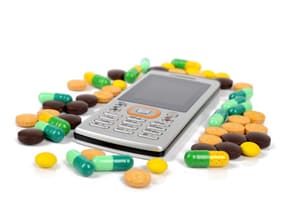
Assessing digital trends in pharma is fraught with a certain amount of difficulty. The differences between companies in terms of their priorities, not to mention their capabilities and culture, makes for a pretty uneven path.
Take two firms of similar size. One might have pretty much perfected its use of Twitter in 2009, where another has only this year started using the micro-blogging site for communications. For one 2013 was the year of Twitter, for the other it was 12 months of business as usual.
But looking back on the last 12 months of ‘digital pharma’ you could make a good case for 2013 being the year when the industry’s use of mobile started to step up a gear.
Perfected is not a word to be applied wholesale to pharma’s use of digital technology, but from apps and devices to mobile sites there are signs of really interesting things happening in mobile.
Looking to my top three Digital Intelligence posts this year and the most popular ones have all been about mobile technology. Leading them was Sanofi’s Monster Manor iPhone and Android app for kids with type 1 diabetes.
Behind Monster Manor came FDA’s approval for J&J’s Bluetooth blood glucose monitor – a first of its kind system that automatically sends blood glucose results via Bluetooth to an iPhone, iPad or iPod Touch. And following that was the COPD Exchange app from Boehringer Ingelheim, which aims to assist healthcare professionals during consultations with COPD patients.
But 2013 also saw some tectonic shifts among regulators, led in September by the US Food and Drug Administration’s (FDA) final mobile guidance.
This will see it exercise “enforcement discretion” over – and therefore not actively seek to regulate – the majority of healthcare apps, which it judges pose only a minimal risk to consumers. Instead it will focus its attentions on what it terms ‘mobile medical apps’, which are those that are intended to either be used as an accessory to a regulated medical device; or to transform a mobile platform into a regulated medical device.
Meanwhile, on this side of the pond the European Commission is building up a head of steam in the area as it prepares to release its mHealth Green Paper to address quality and transparency issues as part of its eHealth focus.
And so to 2014, when it will undoubtedly be the year of mobile (or social media, or iPad detailing or any other area of digital) for one company or another.
But to get the inside track on what you in the industry really think about digital I have high hopes for the Digital Futures 2014 survey we’re running in association with Havas Lynx.
So far it’s had a great level of responses from pharma and biotech professionals – so thank you to those of you who have completed the short survey already.
I’m wary of giving too much away about the results at this stage, so will contain myself to noting somewhat enigmatically that they’re not entirely as I would have predicted and look set to provide some thought-provoking material when they’re published in the January issue of PME and online here.
• It takes just five minutes to complete and will remain open until January 4 2014. Take the Digital Futures 2014 survey now.




